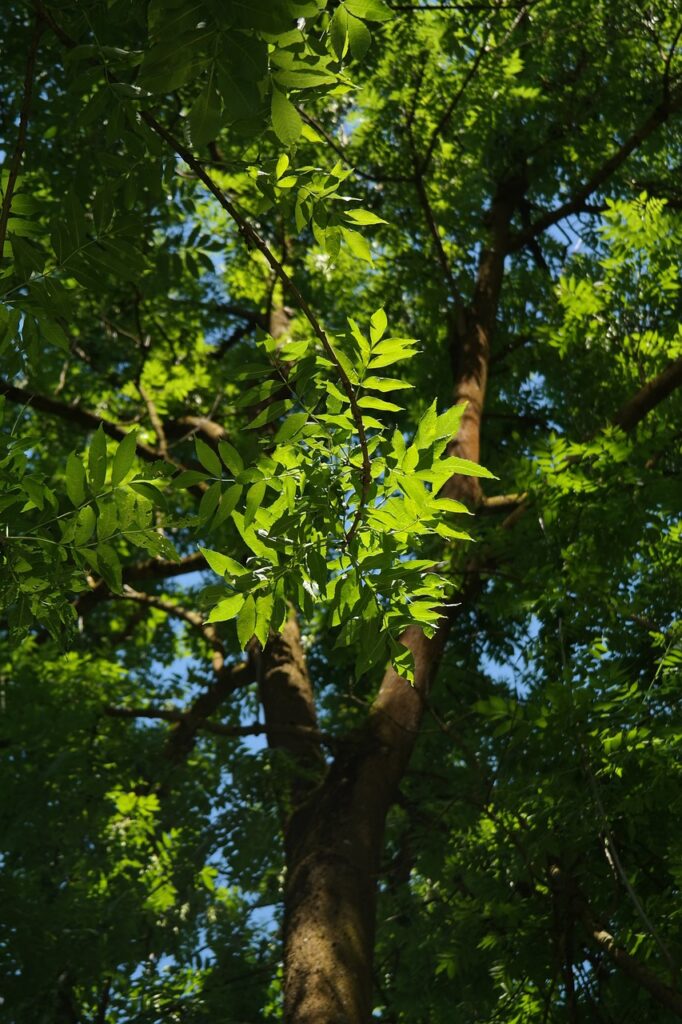Green ash is a deciduous tree commonly found in southern Manitoba, usually on low ground and along river banks. It is considered a medium to tall species (12m in height) with a slender trunk and spreading crown. Green ash leaves are opposite and pinnately compound, composed of 5-9 (though usually 7) short-stalked leaflets that are oval shaped. The leaves are green and the underside is paler and lightly hairy. When the bark is mature, it has grey, diamond-shaped furrows that can be easy to identify. Green ash flowers in the spring with pollen spreading by the wind. The fruits are samaras. In fall, green ash leaves turn a beautiful yellow colour. Hardy and fast-growing tree, green ash is a great tree for shelterbelts. (Tabitha Martens for Winnipeg Trails, 2021).
Green ash is an important tree for Indigenous peoples across the country. The inner bark has historically been used as medicine in teas. It is also used for poultices and as a wash for treating skin conditions. Green ash wood can be used to make pipe stems, tipi pins, drums, meat-drying racks making it a useful species. It is always a good idea to make sure you know exactly what plant you are harvesting from and to only use teas or medicines in moderation. (Tabitha Martens for Winnipeg Trails, 2021).
